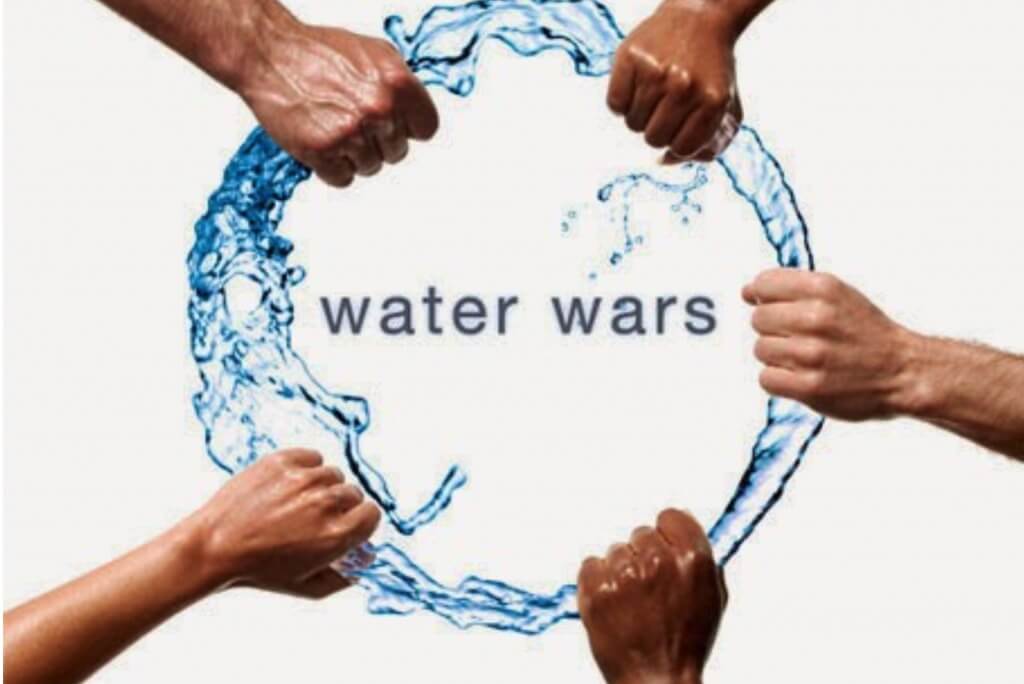Water Battles in the United States

Disputes over water aren’t just in foreign countries and Monterey County. As the US population grows it is becoming an issue in many parts of our country. Even which has one of the more robust and reliable water systems in the world, there are or have been arguments over water between and within many of our states.
Several years ago Georgia, Alabama, and Florida went at it in the courts. The Apalachicola-Chattahoochee-Flint and the Alabathema-Coosa-Tallapoosa river basins provide water for the states of Georgia, Alabama, and Florida. In 1990 Alabama filed a lawsuit against the Army Corps of Engineers, who manages the dams which make up the two systems; with Florida filling a similar suite the following year.
Georgia wanted the water for the Atlanta metropolitan area – which had grown from just one and a half million people in 1970 to six million people today. The states of Florida and Alabama were also growing and didn’t want their rights to the water taken away. This had implications both for the people in those states, and the environment and Endangered Species Act. The problems with the lawsuit was compounded by the fact that the dams had been built with federal funds and thus required Congressional approval for any agreements the states made among themselves.
Georgia wanted over 2,000 acre feet per day from the project (compared to Monterey County’s use of 10,000 acre feet a YEAR). Alabama needed the water to preserve its biodiversity, power generation, and navigation on its rivers. Florida needed the water not just for population growth, but also to protect its shrimp and other seafood industries, as well as to maintain the health of the state’s ecosystems. Both states wanted Georgia to limit (put a cap on) the amount of water it would take. In 2013 Florida finally sued Georgia over the issue.
After 28 years of arguing, the court case finally ended up in the Supreme Court, which issued its decision in June of 2018. Though the court’s special master said that Florida had “failed to prove a consumption cap was necessary” the court decided that Florida is entitled to a ruling in its favor, but only if it shows that “the benefit of the (apportioned water flow) substantially outweigh the harm that might result”. Justice Ruth Baden Ginsberg even said “Can we agree that a cap (on water used by Georgia) at the very least would prevent the situation in Florida from getting worse?”
There have also been water disputes between South and North Carolina about what constitutes a “fair” allocation of water for a river that starts in one state and runs through another before discharging to the Atlantic Ocean. There have been court water cases involving New York and New Jersey; between Memphis, Tennessee and Mississippi because Memphis was drawing in Mississippi’s groundwater across state lines; and between Virginia and Maryland; and one between New Mexico and Colorado.
Eight states in The Great Plains area (South Dakota, Nebraska, Wyoming, Colorado, Kansas, Oklahoma, New Mexico, and part of Texas) sit over the Ogallala Aquifer/Over 80% of the 2.3 million people living in this area use it for drinking water; in addition to which it supports $20 billion in agriculture involving livestock, corn, wheat, and soybeans. But this is a fairly dry area without a lot of rain and the aquifer is not being recharged at anything near the rate it is being depleted, and people have noticed le level of the water going down since 2003.
Although the above are all big issues, the most significant water disputes have actually been in the west. In Texas, neighboring ranchers are fighting over the water under their ground. That’s because Texas relies on something called “The Rule of Capture”, which goes back to English common law from the late 1400’s and claims that anything below your property –and within your property boundaries – belongs to you. As one farmer said “If we sell alfalfa to Saudi Arabia or China, it’s basically exporting water there, so what’s the difference”? But water is not like soil. It doesn’t just stay where it is or go away when you ship it. Water is like air. If you move some of it, other air or water will flow into the gap – and it does so from your neighbor’s area. And if you draw out too much water from an aquifer, it may never recover.